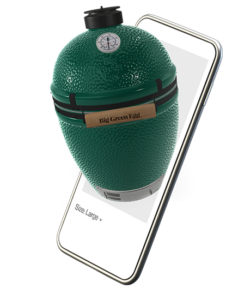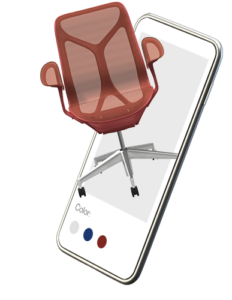Augmented Reality (AR) is changing how people shop online. By overlaying digital content on the real world, shoppers can see products in their own context and make decisions with confidence. For brands and retailers, that means higher engagement, better conversion rates, and fewer returns.
What is Augmented Reality in eCommerce?
In eCommerce, AR lets customers place true-to-scale 3D products into their environment via a phone or tablet. Think virtual sofas in a living room or shoes on your feet through the front camera. This bridges the gap between online and in-store experiences and reduces uncertainty before purchase.
Key AR benefits for eCommerce
AR enhances customer experience and delivers measurable business impact. The most important AR benefits in eCommerce include:
- Higher purchase confidence: shoppers see true scale, materials, and fit before they buy.
- Fewer returns: better expectations lead to fewer mismatches post-purchase.
- Faster decisions: real-time visuals shorten the consideration phase.
- Engagement & shareability: interactive experiences keep visitors longer and drive social sharing.
- Personalization: show relevant variants, finishes, and add-ons based on behavior.
Try before you buy: Virtual try-ons & in-context visualization
AR shines when customers can “try” products before buying. Fashion and accessories benefit from camera-based try-ons, while furniture, home décor, and consumer electronics thrive with in-room placement. Seeing items at true scale reduces doubt and removes the guesswork from size, color, and fit.
For categories like furniture or modular products, AR works even better in tandem with a 3D configurator: shoppers configure a product first (dimensions, materials, options) and then preview that exact variant at home.
Personalization & convenience at scale
Every AR interaction tells you something: which colors get tried most, which rooms products are placed in, which variants convert best. These insights feed product strategy and on-site merchandising. Surface the right options first, recommend compatible accessories, and streamline the path to purchase.
For operations, AR assets are cost-efficient. Once created, 3D/AR models power product pages, ads, email, and social, without repeated photoshoots for every variant.
Impact on KPIs (Conversion, AOV, Returns)
AR is not just a novelty; it moves the metrics that matter:
- Conversion rate: clearer expectations reduce friction at checkout.
- Average order value (AOV): customers confidently add options and compatible accessories.
- Return rate: better pre-purchase understanding means fewer post-purchase surprises.
Want to see results from the field? Browse our customer cases or explore AR within your retail or furniture category.
Industry-specific AR benefits
While the core advantages of AR apply across eCommerce, each industry can leverage it in unique ways:
Furniture & Home Décor: Place items true-to-scale in the customer’s space, reducing uncertainty and return rates.
Fashion & Accessories: Offer camera-based virtual try-ons that drive confidence and increase conversion rates for apparel, eyewear, and jewelry.
Automotive: Let customers explore interiors, colors, and trims in full 360° before visiting a showroom.
Retail & Consumer Goods: Turn packaging into interactive experiences with AR markers that showcase features, videos, or promotions.

Case highlight: boosting sales with Augmented Reality
One of our retail clients implemented AR for their top-selling furniture line. In just six months, they saw:
- +18% increase in conversion rate
- -22% decrease in return rate
- +12% increase in average order value
Customers reported higher satisfaction, citing the ability to visualize products in their homes as the key factor.
Implementation challenges & best practices
To maximize AR’s potential, brands must address a few challenges:
1. Asset quality: Low-quality 3D models will harm credibility. Invest in high-resolution, optimized assets.
2. Mobile performance: Ensure AR models load quickly and run smoothly on smartphones.
3. Clear CTAs: Highlight AR features on product pages so customers know they’re available.
Best practice: start with high-impact products (high margin, high traffic, or high return rates) and expand as you prove ROI.
Future trends in Augmented Reality for eCommerce
The AR landscape is evolving quickly, with several trends on the horizon:
WebAR: Browser-based AR experiences that require no app downloads, making adoption easier.
AR Glasses: Wearable devices that integrate AR shopping into daily life.
AI + AR: Personalization powered by AI-driven product recommendations within the AR experience.
Staying ahead of these trends ensures your brand remains competitive and continues to delight customers.
Conclusion on Augmented Reality?
AR brings the product into the customer’s world, literally. It boosts confidence, accelerates decisions, and delivers tangible ROI across conversion, AOV, and returns. Combined with a 3D configurator, it becomes a powerful end-to-end experience that delights shoppers and drives growth.
Ready to see how AR can support your goals? Explore our AR solution, check your industry, and get inspired by real outcomes in our cases.
